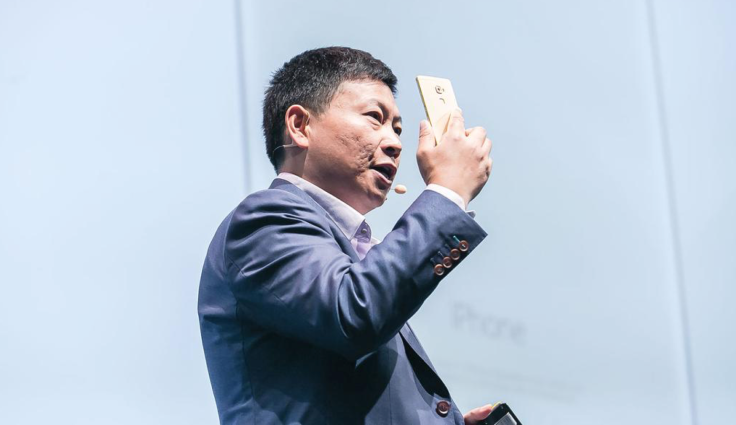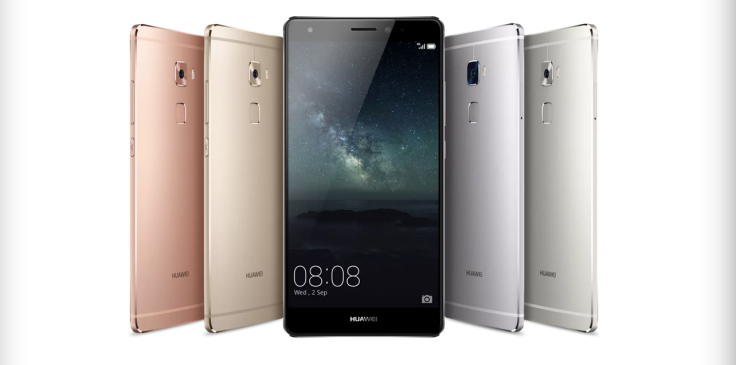Huawei Mate S Brings Force Touch To Smartphones Before iPhone 6s

BERLIN -- Huawei's latest flagship smartphone, the Mate S, boasts a headline-grabbing feature called Force Touch, a technology first seen on the Apple Watch and which is widely anticipated to be included on the iPhone 6s, which is due to launch in a week.
Huawei, currently the world's third-biggest smartphone maker, showed off the feature at the IFA 2015 trade show in Berlin on Wednesday. Richard Yu, the CEO of the company's consumer business group, showed off the new technology, which measures how hard you are pressing on the screen and responds accordingly. The feature can be used to zoom into images, launch secondary menus and can even be used to weigh items simply by placing them on the screen.
To develop the usefulness of Force Touch, Huawei has launched the Force Touch Idea Lab, where anyone can submit ideas for uses for the technology.
The smartphone will go on pre-order in Europe on September 15 and will be launching in over 30 markets globally. The company has said the Force Touch feature will be available only in "select markets," but they have not been identified. Considering all the new technology in the Mate S, it is not surprising that the phone isn't among Huawei's budget offerings. The standard 32GB model will cost €649 ($730), while the 64GB model will cost €699 ($785) -- though the price of the Force Touch model will be even more expensive, with pricing to be revealed in October.
Impressive Specs
Aside from the headline-grabbing and Apple-goading Force Touch feature, the Huawei Mate S has some pretty impressive specs. Its rear-mounted fingerprint scanner is a second-generation model that promises to be twice as fast as the one found on the Mate 7 smartphone. The company has also enhanced the fingerprint technology to allow you to answer calls and take selfies merely using your fingerprint.

The metallic smartphone features a curved rear case and comes with a 5.5-inch screen that has a relatively modest resolution of 1,920 by 1,080 pixels. While Huawei doesn't go as far as saying the Mate S has curved edges in the range of the Samsung Galaxy Edge, it does promise a "2.5D curved Gorilla Glass front." As far as the camera, the phone features a 13-megapixel rear sensor combined with a sapphire lens for better light reception. It even has a flash on the front for the selfie-obsessed -- with Huawei claiming in its presentation that women spend 48 minutes per day taking selfies. (IBTimes has yet to verify that claim.)
Possibily pre-empting Apple once again -- if those pink iPhone rumors can be believed -- Huawei will make the Mate S available in pink as well as the more sedate gold, gray and silver options.
Huawei: The Next Samsung?
Huawei is on a roll. It has just overtaken Microsoft (previously Nokia) as the world’s third-biggest mobile phone maker, and analytics company IHS forecasts that Huawei will ship 109 million smartphones in 2015, up 45% from 2014. It is among a growing cadre of Chinese smartphone makers that are beginning to dominate the market today.
With the launch of the Mate S, Huawei is making another statement on the global stage. It is saying that together with Apple and Samsung, it is helping define the future of mobile communication. While the Mate S and its Force Touch technology is a big moment for the company, but its biggest moment of 2015 -- in terms of the Western world, at least -- is yet to come.
This year, Huawei will launch a Nexus smartphone in partnership with Google for the first time. To be taken under the wing of one of the world’s biggest technology brands and given the responsibility to produce one of its flagship smartphones is surely a benefit that many at Huawei may have thought would never happen.
Ian Fogg, an analyst with IHS, believes Huawei could be on course to replace the current smartphone king: “Huawei is aiming to be the next Samsung, [with] strong premium smartphone flagships and high unit volumes.”
© Copyright IBTimes 2025. All rights reserved.




















